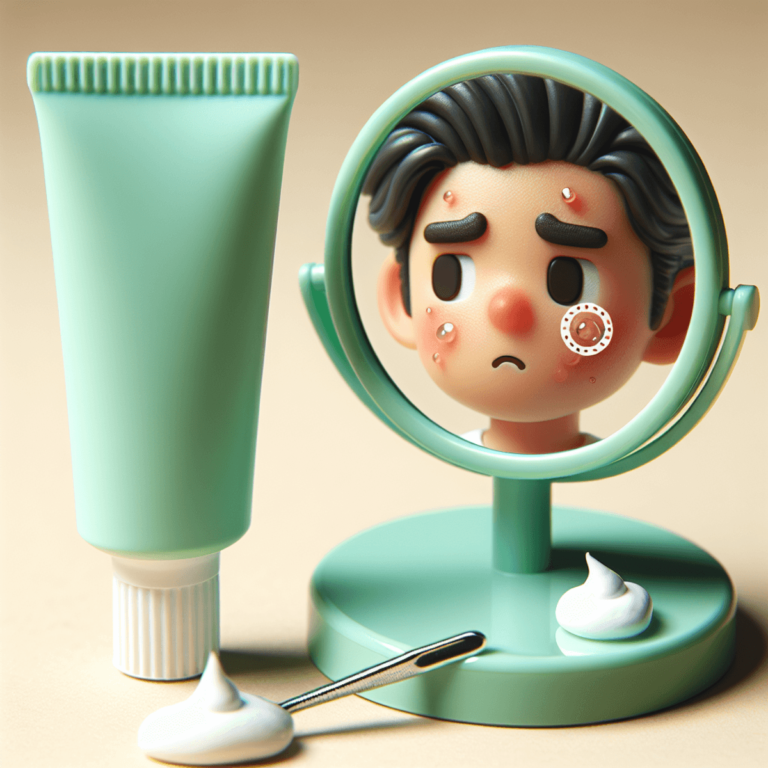Everything to Know About Myomectomy Scarring

Introduction
Uterine fibroids are a common health concern for many women, often requiring medical treatment for effective management. Myomectomy, a surgical procedure aimed at removing uterine fibroids, is crucial in addressing this issue. In this article, we will explore the various aspects of myomectomy scarring, from the risks and complications involved to effective postoperative care strategies. We will also discuss the specific challenges faced by Black women when it comes to keloid scarring, highlighting the importance of recognizing the potential for scarring after a myomectomy surgery.
Understanding the connection between myomectomy surgery and keloid scarring is crucial, especially considering the higher risk that Black women face. The higher prevalence of uterine fibroids among Black women further underscores the need for surgical intervention. Having a clear understanding of these factors is essential in providing comprehensive support and guidance for individuals undergoing myomectomy procedures.
What is a Myomectomy?
Uterine fibroids are noncancerous growths of the uterus that often appear during childbearing years. When these fibroids cause symptoms such as heavy menstrual bleeding, pelvic pressure, or frequent urination, a myomectomy may be recommended as a treatment option.
There are different techniques used in performing a myomectomy, including abdominal and laparoscopic approaches. Abdominal myomectomy involves making an incision in the lower abdomen to access the uterus and remove the fibroids. On the other hand, laparoscopic myomectomy is a minimally invasive procedure where small incisions are made to insert a camera and specialized surgical tools for fibroid removal.
Each approach has potential benefits in terms of scar formation. Abdominal myomectomy may result in a larger visible scar due to the size of the incision, whereas laparoscopic myomectomy often leads to smaller, less noticeable scars. Additionally, the recovery time and postoperative discomfort may vary between the two techniques.
Overall, understanding the specifics of each myomectomy procedure and their potential impact on scarring can help individuals make informed decisions about their treatment options.
Understanding Keloid Scarring
Keloid scars are a type of raised scar that extends beyond the original wound area, often growing larger than the initial injury. They have distinguishing features such as being thick, lumpy, and darker in color compared to the surrounding skin. Keloids can cause discomfort or itchiness and are known for their potential to recur after removal.
Genetic and Ethnic Factors in Keloid Scarring
Both genetic factors and ethnic background play a significant role in keloid scarring. Certain populations, particularly Black individuals, have a higher predisposition to developing keloids. Research suggests that people of African, Hispanic, and Asian descent are more susceptible to keloid formation due to genetic variations linked to skin healing and collagen production.
Keloid Scarring Risk for Black Women Undergoing Myomectomy
For Black women undergoing myomectomy procedures to address uterine fibroids, the risk of keloid scarring is a pertinent concern. The prevalence of uterine fibroids among Black women often requires surgical intervention, increasing the likelihood of keloid development post-surgery. This intersection highlights the importance of understanding and addressing the unique challenges faced by Black women in relation to keloid scarring after myomectomy procedures.
The Risk Factors Associated with Myomectomy Scarring
When you undergo a myomectomy procedure to treat uterine fibroids, there are certain risks and complications that may contribute to increased scar tissue formation. It’s important to understand these factors in order to minimize the visibility of scars and promote optimal healing. Here are some key points to consider:
1. Common risks and complications
There are several factors that can increase the likelihood of noticeable scarring after a myomectomy. These include:
- Infection: If the surgical site becomes infected, it can impede the healing process and potentially lead to more pronounced scarring.
- Poor wound closure: If the incision is not properly closed or if there is tension on the wound, it can result in wider or more visible scars.
- Adhesion formation: Adhesions are bands of scar tissue that form between organs or tissues. They can cause pain, discomfort, and potentially impact fertility.
- Excessive tension on the incision: If there is excessive strain on the incision site during the healing process, it can contribute to hypertrophic or keloid scar formation.
2. The role of surgical technique
The technique used during the myomectomy procedure can have an impact on the development of noticeable scars. Different approaches, such as abdominal or laparoscopic techniques, may have varying effects on scar formation. Laparoscopic procedures, for example, typically involve smaller incisions and may result in less visible scarring compared to open abdominal surgery.
3. Wound healing process
The way your body heals after surgery plays a crucial role in scar formation. Factors such as genetics, age, overall health, and individual variations in collagen production can influence how your body responds to the surgical incision. It’s important to follow proper postoperative care instructions and give your body adequate time to heal.
While these risk factors are worth considering, it’s important to note that not everyone will experience significant scarring after a myomectomy. Each individual’s healing process is unique, and there are steps you can take to minimize scarring and promote optimal healing. For example, following proper postoperative care instructions and being aware of the potential risks associated with adhesion formation can significantly improve your chances of a successful recovery.
Minimizing Scarring Through Proper Postoperative Care
Proper postoperative care is crucial for promoting optimal healing and reducing the visibility of scars after a myomectomy procedure. By following the advice of healthcare professionals and implementing evidence-based methods, you can help minimize scarring and prevent complications such as keloid formation. Here are some important postoperative care instructions to consider:
1. Keeping the incision site clean and protected
Maintaining good hygiene around the incision site is essential for preventing infection and promoting proper healing. You should keep the area clean by gently washing it with mild soap and water, ensuring that you pat it dry afterward. It’s also important to avoid any activities that may expose the incision site to dirt or bacteria.
2. Supporting the healing process through a healthy diet and lifestyle
A nutritious diet can play a significant role in promoting wound healing and minimizing scar formation. Make sure to consume a balanced diet rich in vitamins, minerals, and protein, as these nutrients are crucial for tissue repair. Additionally, staying hydrated and avoiding smoking can also contribute to better healing outcomes.
3. Avoiding activities that may strain the abdominal muscles during the initial recovery period
Engaging in strenuous activities or heavy lifting too soon after surgery can put unnecessary stress on your abdominal muscles and potentially disrupt the healing process. It is advisable to follow your surgeon’s instructions regarding physical activity limitations during the initial recovery period.
To further manage myomectomy scars and prevent complications like keloid formation, consider implementing these evidence-based methods:
- Gentle massage techniques: Massaging the scar tissue can improve blood circulation to the area and increase tissue flexibility, ultimately reducing scar visibility. Using gentle circular motions with clean hands or a soft silicone brush, massage the scar for about five minutes at a time, several times a day. However, it’s essential to wait until your incision has fully closed before initiating scar massage.
- Silicone sheets or gels: Silicone-based products, such as sheets or gels, have gained popularity in scar management. These products create a protective barrier over the scar and help maintain hydration, which can flatten and soften the scar tissue over time. Apply the silicone sheet or gel according to the manufacturer’s instructions and continue usage for several months for optimal results.
Remember, everyone’s healing process is unique, and individual results may vary. It’s essential to consult with your healthcare provider before starting any postoperative care regimen. They can provide personalized advice based on your specific situation. Additional resources on scar management are available here and here.
Medical Treatments for Severe or Persistent Myomectomy Scars
When it comes to addressing severe or persistent myomectomy scars, there are advanced treatment options available to help individuals manage significant scarring following the procedure. These treatments aim to minimize the visibility of scars and improve the overall appearance of the skin.
Corticosteroid Injections
One option for treating myomectomy scars is the use of corticosteroid injections. These injections work by reducing inflammation in the scar tissue and encouraging collagen remodeling. By targeting the inflammatory response within the scar, corticosteroids can help soften and flatten raised scars, such as keloids, resulting from myomectomy procedures.
Laser Therapy
Another advanced treatment option for myomectomy scars is laser therapy. This approach involves using targeted laser energy to address specific areas of scar tissue. Laser therapy can help improve the texture and tone of the skin, minimizing the appearance of scars resulting from myomectomy surgery.
Both corticosteroid injections and laser therapy are viable options for individuals seeking to address severe or persistent myomectomy scars. Consulting with a healthcare professional specializing in scar management can provide personalized insights into the most suitable treatment approach based on individual needs and the nature of the scarring.
By exploring these advanced medical treatments, individuals can take proactive steps towards managing their myomectomy scars and achieving improved skin appearance following the surgical procedure.
Embracing Your Body’s Healing Journey: Coping with the Emotional Impact of Scarring
Visible scars, like the ones left behind after a myomectomy procedure, can deeply affect how we feel about ourselves and our bodies. For women who have undergone myomectomy surgery, these scars may bring up emotional distress due to changes in their physical appearance. It’s important to acknowledge these concerns and find healthy ways to cope as we navigate our healing process.
The Emotional Toll of Visible Scars
Visible scars often serve as constant reminders of past surgeries and medical treatments. In the case of myomectomy scars, women may feel self-conscious about the marks on their abdomen or pelvic area. This can lead to various emotional difficulties, including:
- Reduced self-esteem: Scarring may make us feel less confident about our bodies and how we look overall.
- Body image perception: Myomectomy scars could change how women see themselves physically, potentially affecting their sense of being a woman and their sexuality.
Healthy Ways to Cope with Emotional Distress
While dealing with the emotional impact of myomectomy scars is a personal journey for each individual, there are several strategies that can be helpful in promoting self-acceptance and emotional well-being:
- Being Kind to Ourselves: Practicing self-compassion means treating ourselves with kindness and understanding. Let’s remember that scars are a natural part of the healing process and that our value isn’t solely based on how we look.
- Seeking Support: It can be comforting to reach out to loved ones, friends, or support groups who can offer empathy and understanding during this time. Sharing our feelings with others who have had similar experiences can be incredibly reassuring.
- Taking Care of Ourselves: Prioritizing activities that promote self-care and well-being is essential. This might include practicing emotion regulation techniques, engaging in gentle exercise, or treating ourselves to activities like taking warm baths or getting a massage.
- Getting Professional Help: If we find that our emotional distress is significantly affecting our daily lives and well-being, it’s important to seek professional help. Therapeutic approaches such as counseling or cognitive-behavioral therapy can provide effective tools for managing and accepting the emotional impact of scarring.
Remember, healing involves more than just recovering physically. Taking care of our emotional well-being and addressing the psychological effects of myomectomy scars is a crucial part of embracing our body’s healing process. We’re not alone, and there are resources available to support us as we work towards self-acceptance and personal growth.
Seeking Support: Resources for Dealing with the Mental Health Effects of Surgical Scars
The psychological impact of surgical scarring can be overwhelming, and seeking support is crucial for navigating through this emotional journey. Here are some resources to help you cope with the mental health effects of myomectomy scars:
1. Importance of Seeking Professional Help and Building a Strong Support Network
It’s essential to reach out to mental health professionals who specialize in body image issues and trauma. Additionally, building a strong support network of friends and family can provide much-needed emotional support during this challenging time.
2. Online Communities and Support Groups
Joining online communities and support groups for individuals with similar experiences can offer a sense of belonging and understanding. Engaging with others who have gone through similar experiences can provide valuable insights and emotional validation.
3. Therapeutic Approaches
Therapeutic interventions such as counseling or cognitive-behavioral therapy (CBT) can aid in scar acceptance and resilience building. These approaches focus on addressing negative thought patterns and developing healthy coping strategies to navigate the emotional impact of surgical scars.
Remember that seeking support is not a sign of weakness, but rather a proactive step towards healing emotionally. You are not alone, and there are resources available to help you through this challenging time.
Conclusion
- It’s important to acknowledge the significance of comprehensive care that addresses both the physical and emotional impacts of myomectomy scarring.
- Accepting one’s body, including its scars, is a powerful demonstration of strength and healing resilience. It serves as a reminder of the journey taken and the obstacles overcome.
- Call to Action: If you or someone you know is considering a myomectomy procedure, make sure they have thorough knowledge about the possibility of scarring and the importance of proactive scar management. Together, we can challenge societal beauty standards and promote greater acceptance of our bodies’ natural healing processes.
Remember, by taking careful care after surgery and receiving support, you can achieve the best healing results and confidently embrace your body’s incredible ability to heal itself.










